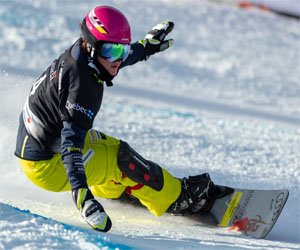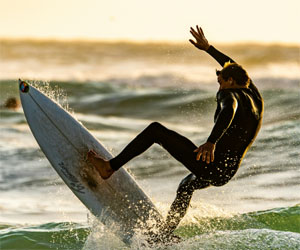


A Beginner's Guide

Ultimate Frisbee, often simply called "Ultimate," is a thrilling and fast-paced team sport that combines elements of soccer, basketball, and football with a flying disc. If you're new to Ultimate Frisbee and want to get started, this beginner's guide will provide you with the basics to help you jump into the game with confidence.
1. The Objective: The primary goal in Ultimate Frisbee is to score points by catching the disc in the opposing team's end zone. Each team has seven players on the field, and the game is typically played until one team reaches a predetermined number of points.
2. Starting Play: A game of Ultimate begins with a "pull," which is essentially a throw-off. One team pulls the disc to the other to initiate play. The receiving team then attempts to advance the disc up the field through passing and catch the disc in the opposing team's end zone.
3. Movement And Passing: Players move the disc down the field through a series of passes. When a player has possession of the disc, they cannot move, only pivot on one foot. They must establish a pivot foot before passing the disc to a teammate. Passing is done by throwing the disc to a teammate, who aims to catch it. Passing techniques include forehand, backhand, and hammer throws.
4. Turnovers And Possession: If a pass is dropped, intercepted, or goes out of bounds, possession of the disc is turned over to the opposing team. The game features a strong emphasis on turnover-free play, and turnovers are a part of the strategy and excitement in Ultimate.
5. Scoring: Points are scored when a player catches the disc in the opposing team's end zone, similar to scoring a touchdown in football. Each team has an end zone they defend and one they attack. The team with the most points at the end of the game wins.
6. Defending: On defense, players work to prevent the offense from advancing the disc. They mark or guard offensive players to block passes and create turnovers. Defenders can also attempt to intercept the disc. It's important to stay within a few feet of your mark to avoid "traveling" violations.
7. Self-Officiation: One of the unique aspects of Ultimate is its self-officiation. Players are responsible for making their own calls and resolving disputes on the field. This promotes a strong sense of sportsmanship and fair play.
8. Fouls And Penalties: Ultimate has a set of rules that determine fouls and penalties, which are called by the players themselves. Common fouls include contact between players, traveling (taking more steps than allowed while holding the disc), and double teaming (guarding the same offensive player with two defenders).
9. Substitutions: Teams can make substitutions during stoppages in play or after points are scored. This allows players to rest and keep the team fresh and competitive.
10. The "Spirit Of The Game": The "Spirit of the Game" is a foundational principle in Ultimate Frisbee. It emphasizes fair play, sportsmanship, and mutual respect between players. While the game is competitive, players are expected to uphold these values throughout the match.
11. Practice And Learning: To become proficient at Ultimate, practice is essential. Learning how to throw accurately, catch the disc, and understand the strategies of the game are all vital components. Consider joining a local Ultimate Frisbee club, finding a coach or experienced player, and watching online tutorials to enhance your skills.
Ultimate Frisbee is an exciting sport that combines athleticism, strategy, and sportsmanship. Learning the basics is the first step in enjoying the game, so grab a disc and start practicing. With dedication and practice, you can become a skilled Ultimate Frisbee player and immerse yourself in this dynamic and inclusive sport.
Finding Peace In The World Of Feathers
 Nature's Tranquil Haven: Birdwatching takes you to some of the most serene and tranquil corners of the natural world. Whether you're perched on a park bench or nestled in the woods, the act of focusing on the sights and sounds of birds creates a connection with nature that calms the mind. The rustling leaves, gentle streams, and melodious bird songs provide a harmonious backdrop for relaxation.
Nature's Tranquil Haven: Birdwatching takes you to some of the most serene and tranquil corners of the natural world. Whether you're perched on a park bench or nestled in the woods, the act of focusing on the sights and sounds of birds creates a connection with nature that calms the mind. The rustling leaves, gentle streams, and melodious bird songs provide a harmonious backdrop for relaxation.
Mindful Presence: Birdwatching encourages a state of mindfulness, where you become fully present in the moment. The act of observing birds requires concentration and patience, allowing you to escape the worries of yesterday and the anxieties of tomorrow. Your focus shifts to the intricate beauty of the avian world unfolding before you.
Stress Reduction: Research has shown that spending time in natural settings, like birdwatching in a park or forest, can significantly reduce stress levels.




 One of the most remarkable aspects of camping is the way it encourages us to appreciate the intricacies of the natural world. It's an invitation to observe the changing colors of the sky as the sun sets, to listen to the wind whisper through the trees, and to awaken to the songs of early morning birds. Through camping, we learn to notice the small details that often go unnoticed in our daily lives.
One of the most remarkable aspects of camping is the way it encourages us to appreciate the intricacies of the natural world. It's an invitation to observe the changing colors of the sky as the sun sets, to listen to the wind whisper through the trees, and to awaken to the songs of early morning birds. Through camping, we learn to notice the small details that often go unnoticed in our daily lives.
Embracing nature through camping is also an invitation to disconnect from the digital world. With limited or no internet and cellular connectivity, we are encouraged to engage with our surroundings and the people sharing our campsite. It's a chance to bond with friends and family over a campfire, to tell stories under the starry night sky, and to truly be present in the moment.
Camping is not only a way to connect with the environment but also an opportunity to reconnect with ourselves. Away from the distractions of our screens, we can reflect on our thoughts, dreams, and aspirations. We can find solace in the simple act of preparing a meal over an open flame or watching the dance of a campfire's flickering flames. It's a form of mindfulness that can bring about a sense of inner peace.
In essence, camping is an experience that encourages us to embrace nature in all its glory. It's an invitation to hike through lush forests, swim in pristine lakes, and marvel at the grandeur of towering mountains. It's a way to celebrate the beauty of the natural world and to gain a deeper understanding of the ecosystems that support life on this planet.
A Thrilling Adventure
 One of the most captivating aspects of conquering trails and terrain on a mountain bike is the ever-changing landscape. Riders can transition from gentle dirt paths to rocky, technical descents, and back again in a matter of minutes. This dynamic experience keeps the adrenaline pumping and the senses heightened, making each ride a unique adventure.
One of the most captivating aspects of conquering trails and terrain on a mountain bike is the ever-changing landscape. Riders can transition from gentle dirt paths to rocky, technical descents, and back again in a matter of minutes. This dynamic experience keeps the adrenaline pumping and the senses heightened, making each ride a unique adventure.
The versatility of mountain biking means that riders can choose trails that match their skill level. Beginners can start with smoother, more straightforward paths, while experienced riders seek out challenging routes with steep inclines, sharp turns, and obstacles to navigate. It's a sport that offers progression, so as riders become more skilled, they can tackle increasingly demanding terrain.
Conquering trails and terrain on a mountain bike is not just about the physical aspect; it's a mental challenge as well. Riders must make quick decisions, read the trail ahead, and adapt to changing conditions. It's a test of focus, determination, and problem-solving skills.
Safety is paramount when exploring these trails, and riders should wear appropriate protective gear, including a helmet, gloves, and body armor. Additionally, it's crucial to maintain the mountain bike in top condition, ensuring the brakes, suspension, and tires are in optimal working order.
Embracing Nature's Hidden Beauty
 The Appeal Of Untouched Landscapes: Untouched landscapes beckon explorers and nature enthusiasts with promises of solitude, serenity, and unparalleled beauty. These are the places where nature's true character reveals itself, unaltered by human intervention. The appeal lies in the raw, unspoiled beauty that stirs the soul and offers a rare opportunity to witness the world as it was meant to be.
The Appeal Of Untouched Landscapes: Untouched landscapes beckon explorers and nature enthusiasts with promises of solitude, serenity, and unparalleled beauty. These are the places where nature's true character reveals itself, unaltered by human intervention. The appeal lies in the raw, unspoiled beauty that stirs the soul and offers a rare opportunity to witness the world as it was meant to be.
Exploration And Adventure: Discovering untouched landscapes often involves exploration and adventure. These areas are typically off the beaten path and may require more effort to reach. Whether it's hiking through dense forests, kayaking down remote rivers, or trekking through rugged terrain, adventurers are rewarded with the thrill of uncovering nature's hidden gems.
Preserving Pristine Environments: For those who undertake the journey of discovering untouched landscapes, there is a sense of responsibility to preserve these pristine environments. With a commitment to Leave No Trace principles, visitors aim to minimize their impact, ensuring that these places remain unspoiled for future generations to enjoy.
Remote Wilderness Areas: Untouched landscapes can be found in remote wilderness areas around the world. These places are often far from civilization and may lack modern amenities, which is precisely what makes them so special. Remote wilderness areas provide an opportunity to disconnect from the modern world and reconnect with the natural world.
Embrace The Snowy Slopes
 The Basics Of Skiing And Snowboarding: Before you hit the slopes, it's essential to understand the fundamental differences between skiing and snowboarding. Skiing involves using two separate skis on your feet, while snowboarding employs a single snowboard. Skiing is typically easier to learn for beginners as it allows for better balance, while snowboarding requires a bit more coordination but offers a unique sense of control and style.
The Basics Of Skiing And Snowboarding: Before you hit the slopes, it's essential to understand the fundamental differences between skiing and snowboarding. Skiing involves using two separate skis on your feet, while snowboarding employs a single snowboard. Skiing is typically easier to learn for beginners as it allows for better balance, while snowboarding requires a bit more coordination but offers a unique sense of control and style.
Choosing The Right Gear: Selecting the right equipment is crucial to your success on the slopes. Make sure to invest in well-fitted boots, skis or a snowboard, and appropriate clothing to keep you warm and dry. Rental equipment is a cost-effective option for beginners, allowing you to test the sport before committing to your own gear.
Lessons And Instruction: Enrolling in lessons with a certified instructor is a wise choice for beginners. Ski schools and snowboarding instructors can provide you with proper guidance, teach you the essential techniques, and ensure your safety. They will help you learn how to balance, turn, and stop effectively, reducing the risk of injuries.
Understanding Terrain: Ski resorts offer various terrains, including green (beginner), blue (intermediate), and black (advanced) slopes. Start on the green slopes to practice your skills and build confidence. Progress to more challenging terrain as you become more proficient. Always pay attention to trail signs and ski within your comfort zone.
Surfboard Designs For Beginners
 Longboards: The Stable Platform
Longboards: The Stable Platform
Longboards, often over 8 feet in length, are the classic choice for beginners. These surfboards provide unmatched stability and buoyancy, making them an ideal starting point. Key features of longboards for beginners include:
Length: Longboards are longer, which means more stability and room for paddling.
Width: Their width provides additional stability, making it easier for beginners to find their balance.
Volume: Longboards have ample volume, aiding in buoyancy and making it easier for novice surfers to catch smaller waves.
Longboards are perfect for learning the basics of paddling, balancing, and wave-catching. They offer a forgiving platform for new surfers, allowing them to gain confidence and experience the joy of riding waves.
Foam Boards: The Soft Landing
Foam boards, or soft-top surfboards, are another excellent choice for beginners. These boards are constructed with a soft, foam-covered deck, making them exceptionally safe for newcomers. Key features of foam boards include:
Safety: Foam boards reduce the risk of injury during falls, thanks to their soft construction.
Buoyancy: They offer sufficient buoyancy for easy paddling and wave-catching.
Stability: The wide and stable platform helps beginners find their balance.
A Sport With A Winning Combination
 Accessibility: One of the most significant advantages of pickleball is its accessibility. The game's court dimensions are smaller than those of traditional tennis, making it an ideal choice for people of all ages and physical conditions. Whether you're a child, a senior, or somewhere in between, pickleball offers an inclusive and welcoming environment. The sport accommodates various skill levels and abilities, ensuring that everyone can participate.
Accessibility: One of the most significant advantages of pickleball is its accessibility. The game's court dimensions are smaller than those of traditional tennis, making it an ideal choice for people of all ages and physical conditions. Whether you're a child, a senior, or somewhere in between, pickleball offers an inclusive and welcoming environment. The sport accommodates various skill levels and abilities, ensuring that everyone can participate.
Social Interaction: Pickleball is as much a social activity as it is a sport. The game's format encourages interactions and fosters a sense of camaraderie. Many players join local pickleball clubs, groups, or leagues, providing opportunities to connect with others who share their passion for the sport. The social aspect of pickleball strengthens community ties and often leads to lasting friendships.
Physical Fitness: Playing pickleball is an excellent way to stay physically active and maintain overall health. The sport involves continuous movement, from quick lateral shifts to agile net approaches, which provide a cardiovascular workout and promote agility. Regular play helps improve balance, coordination, and endurance, making it an effective way to enhance one's physical fitness.
Mental Stimulation: Pickleball offers both physical and mental stimulation. Players must strategize, anticipate their opponents' moves, and make split-second decisions. This mental engagement contributes to improved cognitive function and keeps players sharp as they age.
Short Learning Curve: Pickleball has a relatively short learning curve compared to other racket sports. Newcomers can quickly grasp the basic rules and techniques, allowing them to enjoy the game without prolonged training periods. This accessibility and ease of learning make pickleball particularly appealing to beginners.
 Concealment And Ambushes: One of the oldest tricks in the book, concealing your presence and setting up ambushes can catch your opponents off guard. Blend into your surroundings, take advantage of natural cover, and wait for your opponents to walk into your line of fire.
Concealment And Ambushes: One of the oldest tricks in the book, concealing your presence and setting up ambushes can catch your opponents off guard. Blend into your surroundings, take advantage of natural cover, and wait for your opponents to walk into your line of fire.
Suppressive Fire: Suppressing your opponents by laying down a barrage of paintballs keeps their heads down and prevents them from making strategic moves. This tactic can provide cover for your teammates to advance or reposition.
Flanking Maneuvers: Outflanking your opponents is a classic cunning tactic. By taking a wide route to the side or rear, you can catch them in a crossfire, making it difficult for them to defend themselves effectively.
Communication And Coordination: Effective communication is a cornerstone of cunning tactics in paintball. Work with your team to share information about the enemy's positions and movements.